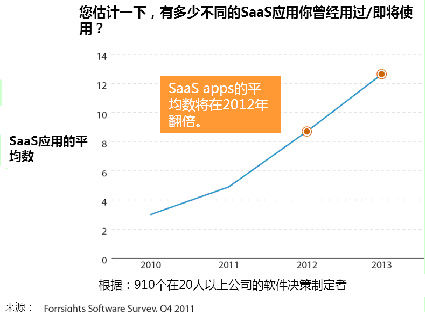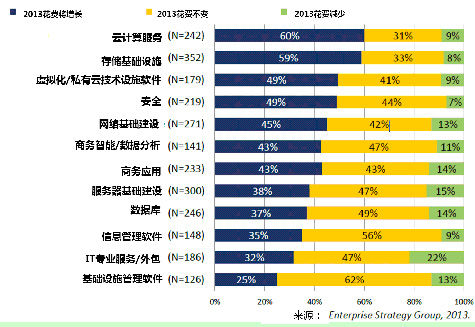However, things did not develop as people imagined. MTV has not become a true revolution. It is not even new ideas. I was listening to music from the radio on the way to work this morning. In fact, the MTV was nothing more than an improved version of the 1960s' old idea, when the Beatles' A Hard Day's Night used the music video creatively for the first time in the movie.
In fact, before 1981, the idea had entered the television field many times, and there were many different forms, such as Brothers Comedy Hour and Monkees of Smothers. In the 1970s, Bob Whitney, the founder of Philadelphia's "Top-40" radio program, sold a music television marathon idea called "THE NOW EXPLOSION" to television stations. During the broadcast of the program, the station broadcast for hundreds of hours in 13 weeks. Music television program. Directors Steve Rash and Fred Bauer set up a new music television company called Innovisions and produced a new program titled THE MUSIC CONNECTION. After the show was hacked, Viacom purchased its copyright and finally launched MTV...
As you can see, MTV was not the first form of music television. It was only the earliest long-term success. MTV did not "destroy radio singers" as Buggles said in the MTV that was first staged in 1981. What we learned from this matter is that if it is appropriate, people will have a clear demand for music and television programs, but it will only supplement broadcasts and will not eliminate broadcasts.
This also applies to the informal term "cloud computing." Early products claim that this revolutionary idea of ​​cloud computing will eliminate the traditional enterprise internal equipment, and private data centers are outdated. But if anyone looks around at the current state of cloud computing and enterprise data centers, there will be enough evidence to show that cloud computing and music TV are in similar state.
The basic fact is that cloud computing (however you define it) is not revolutionary. According to the National Institute of Standards and Technology (NIST), "Cloud computing is a model that enables users to easily and conveniently use a network to access configurable computing resources (eg, networks, servers, storage systems, applications, and services) at any location. )'s shared pool can quickly pre-configure and publish these resources with minimal administrative effort or service provider interaction."
This is just an evolution of the enterprise's early offering of similar service capabilities to internal users through mainframes. Admittedly, in the early days of mainframes, sharing was limited to the company, and the World Wide Web came into existence only after a long time. However, the concept of cloud computing had already emerged as early as then. At that time, the unusually high wages and number of professionals forced the companies to share resources of computer resources and pay according to the department's usage. Well, perhaps the definition of the mainframe and the cloud today has a revolutionary difference in the rapid pre-configuration, but it can also be said that this is only for those users who can only wait a few weeks to put a green screen terminal on their desktop. As a result of the protests, they rushed out of the air.
During this time, JCR Licklider conceived an idea called "interplanetary computer network," which was the basis of ARPANET. (If you're familiar with history, you know, ARPANET is what we commonly call the Web today—also known as the foundation of the Internet.)
After that, cloud computing broke out. That was when Ramnath Chellappa, a professor of information systems at the University of Texas, said the word for the first time at the INFORMS conference in Dallas in 1997 when he said: "Calculation has evolved from mainframe-based architecture. At the same time, there are many terms used to describe these new forms, and the emergence of e-commerce has led to the emergence of 'cloud computing'. The purpose of this work is to analyze agents and intermediaries supporting this framework. Play a role."
The first true warning to the traditional data center was in 1999 when Mark Benioff received the support of Larry Ellison and established Salesforce.com, a Customer Relationship Management (CRM) software company, in a small apartment in San Francisco. "The revolution began. Ironically, one year ago, Larry Ellison also funded another "cloud" initiative - formerly NetLedger NetSuite, but Salesforce.com is still widely regarded as the first software-as-a-service (SaaS) company.
The emergence of SaaS does have the potential to break the traditional data center and procurement model. Suddenly, businesses can choose to use mission-critical enterprise software without using any additional data center computers. More importantly, the business department discovered Salesforce.com and began buying CRM "seats" directly without the need for the IT organization of their own company to provide relevant knowledge and support.
But what about the outcome? IT department did not disappear. Instead, they discovered that there were "rogue apps" throughout the company. In general, this happens when users find that their superior new application is really working and they need to share information with other systems managed by IT staff. Therefore, SaaS began to integrate into the traditional IT field of enterprise computing.
Another major threat to corporate data centers emerged in 2002, when Amazon established Amazon Web Services, a cloud-based service that includes storage and computing, opening the era of Infrastructure as a Service (IaaS). It was later commercialized in 2006 and Amazon released a version called EC2 (Elastic Compute Cloud) and S3 (Simple Storage Service). Through these services, users can rent computing cycles and storage resources and pay according to usage.
Of course, the traditional data center ends! Buggles is right! However, things did not develop as expected. Amazon and other IaaS companies (such as Rackspace Cloud and Azure) have risen. This provides a convenient way for small companies to adopt applications without having to build a data center (or place a hot server in a closet or somewhere). Big companies have not ignored this. Some large companies see it as an ideal resource for improving the resources of existing data centers and helping to adjust the peaks and troughs of computing consumption. This concept is increasingly known as a "cloud burst," which allows companies to introduce external computing cycles when they require special applications that are not found in internal infrastructure.
Looking at the experience along the way, the IT sector has exposed the flaws of early cloud computing to the whole world. The main issues arise from the continued availability of data security and resources, which are problems that enterprise data centers have been dealing with for years and are also very good at handling them. Just recently in December 2012, there was a serious accident in Amazon. Netflix streaming customers and Salesforce.com Heroku customers were affected almost the entire day. And just before April 2011, Amazon's accident took a few customers to recover in a matter of days.
Recently, everyone's attention has shifted to private and hybrid clouds. This is obviously admitting that the traditional data center has not yet become obsolete. "If you can't beat 'em, join 'em", a book that says major cloud infrastructure providers such as Citrix, Microsoft, and VMware are advocating that they can use their own virtualization platform Establish a private cloud in the data center.
How does this affect the data center's expenditure model? In recent years, data center spending has somewhat resembled a roller coaster ride, partly due to the lack of overall economic development since 2008. As the ESG research report (ESG survey report: 2013 IT expenditure intention survey) shows, cutting costs seems to be the mantra of the IT field.

In addition, analysts expect a larger share of the IT budget will be allocated for cloud computing initiatives, including the implementation of SaaS and hybrid clouds.


Finally, in the same IT spending intent survey report, ESG also reported that there will be a greater share of the IT budget for maintaining the existing infrastructure than investing in new IT projects.

Obviously, companies are adjusting their understanding of the practicality of cloud computing and their spending patterns reflect:
1. Reduce costs
2. Invest in more cloud projects (it allegedly supports the above-mentioned intention of ranking first)
3. People will argue that the first and second intentions in the above table will lead to a shift in the relevant budget share from new technology investment to the maintenance of existing technology.
At Emulex, we have been keeping a close eye on the deployment of these technologies because they affect the customer's buying behavior. Although we do not think that television will really eliminate broadcast singers, we do realize that television and radio singers have room for development. We treat them equally (to promote them).
Outdoor Led screen Kiosk as led poster is a very effective, eye-catching medium which can be fabricated as per the requirement of the application. A Outdoor Led Poster or Led screen kiosk in a standee with has an in-built player connected to the screens which can be updated from any remote location by using digital signage software. This medium can be used to welcome guests, advertise products as well as disseminate important information relevant to its viewers.
outdoor led screen Kiosk can have multiple led screens connected. The led screen poster can be used for advertisement but also the whether information and other tasks like online surfing, bill payments, shopping, etc for its users.
Outdoor Led Poster,Floor Standing Outdoor Led Poster,Outdoor Mobile Led Poster,Outdoor Led Flag Screen
Shenzhen Priva Tech Co., Ltd. , https://www.privaled.com